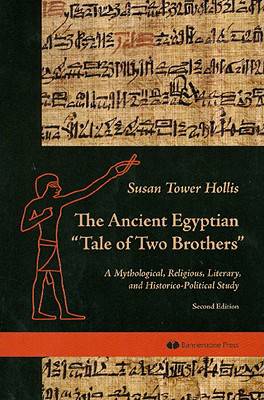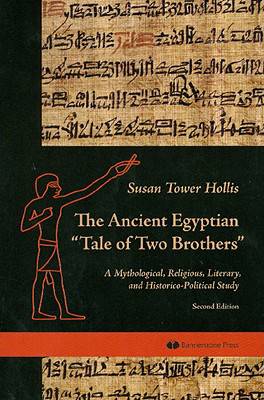
- Afhalen na 1 uur in een winkel met voorraad
- Gratis thuislevering in België vanaf € 30
- Ruim aanbod met 7 miljoen producten
- Afhalen na 1 uur in een winkel met voorraad
- Gratis thuislevering in België vanaf € 30
- Ruim aanbod met 7 miljoen producten
Zoeken
The Ancient Egyptian "Tale of Two Brothers"
A Mythological, Religious, Literary and Historico-Political Study
Susan Tower Hollis
Paperback | Engels
€ 26,95
+ 53 punten
Omschrijving
What is the meaning of this story from antiquity, so similar in form to the European folktale? The "Tale of Two Brothers" describes a rite of passage, telling the the nearly universal story of a handsome and chaste young shepherd who rejects seduction by a powerful older woman and, after many adventures, becomes king. The story of this shepherd, Bata, is intertwined with that of his brother Anubis who, deceived at first, is unceasing in his efforts to restore his brother and eventually becomes king himself. The tale also has traits peculiar to ancient Egypt, notably that the main characters are gods as well as kings. Bata and Anubis are both divine figures connected with Egypts mortuary cults, and their story is replete with religious symbols of rebirth. Using comparative analysis, the author makes a major contribution to our understanding of a story that has puzzled folklorists for almost 140 years. At the same time, she constructs a model for examining ancient narratives, neither denying their cultural context nor allowing it to impede understanding. To provide this ancient context, Susan Tower Hollis utilizes a variety of works, including literary, mythological and wisdom texts, cultic materials, historical and political works, and Egyptian paintings, reliefs and sculptures. The second edition of this classic and long out-of-print text takes into account further scholarship on the "Tale of Two Brothers" since its original publication in 1990 and contains a new, updated bibliography.
Specificaties
Betrokkenen
- Auteur(s):
- Uitgeverij:
Inhoud
- Aantal bladzijden:
- 239
- Taal:
- Engels
Eigenschappen
- Productcode (EAN):
- 9780977409426
- Verschijningsdatum:
- 1/10/2008
- Uitvoering:
- Paperback
- Formaat:
- Trade paperback (VS)
- Afmetingen:
- 150 mm x 226 mm
- Gewicht:
- 340 g

Alleen bij Standaard Boekhandel
+ 53 punten op je klantenkaart van Standaard Boekhandel
Beoordelingen
We publiceren alleen reviews die voldoen aan de voorwaarden voor reviews. Bekijk onze voorwaarden voor reviews.








